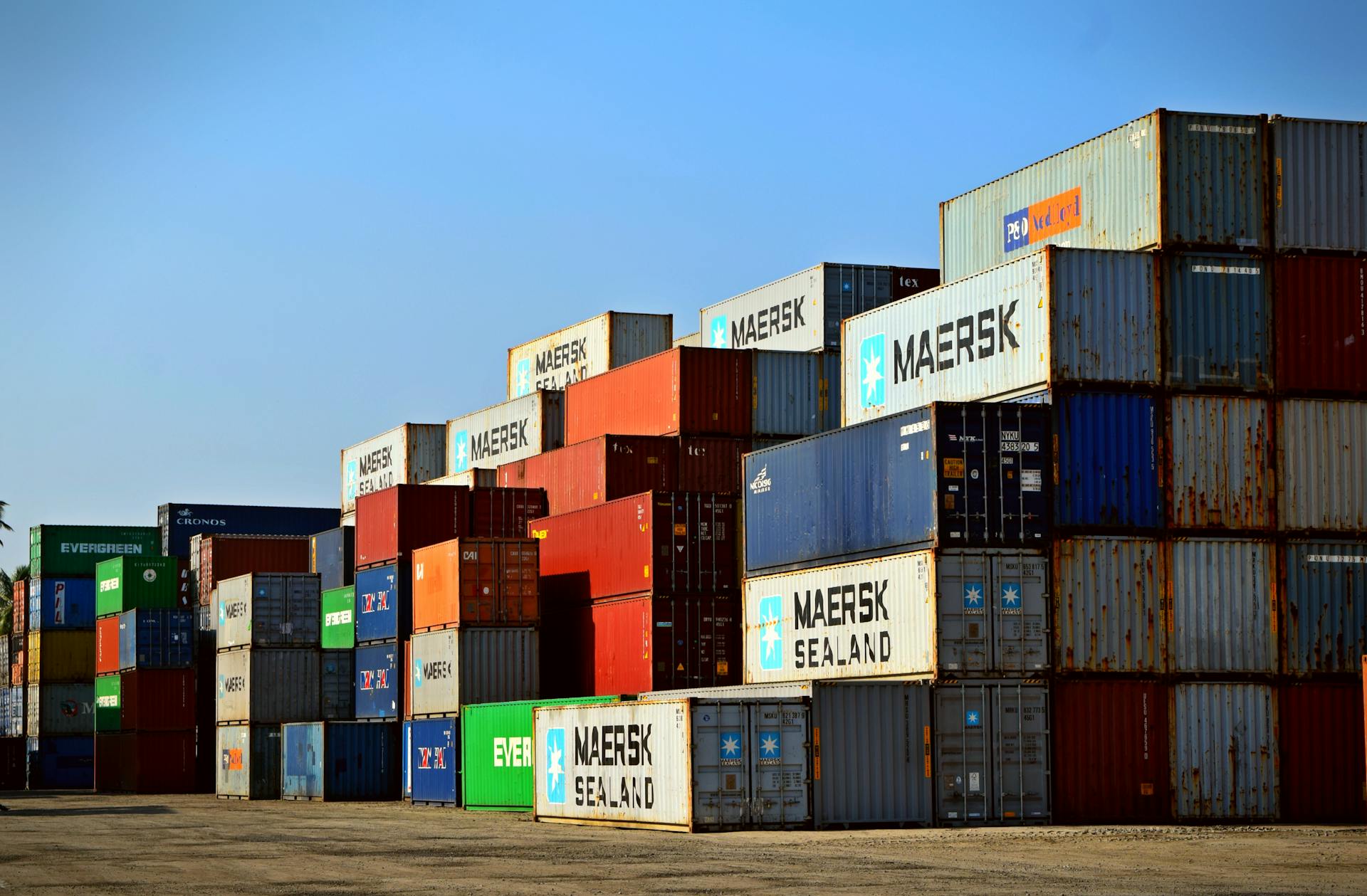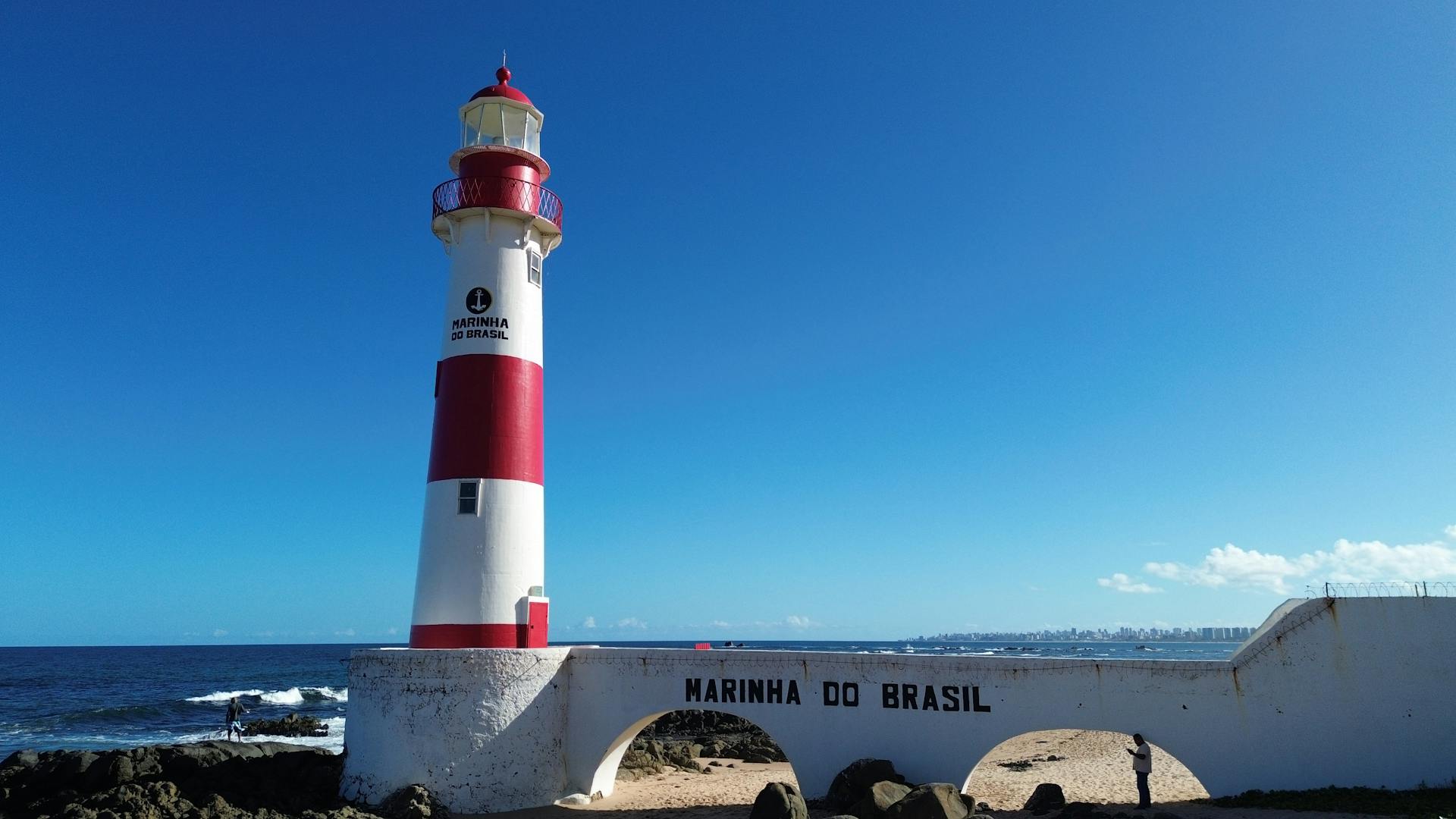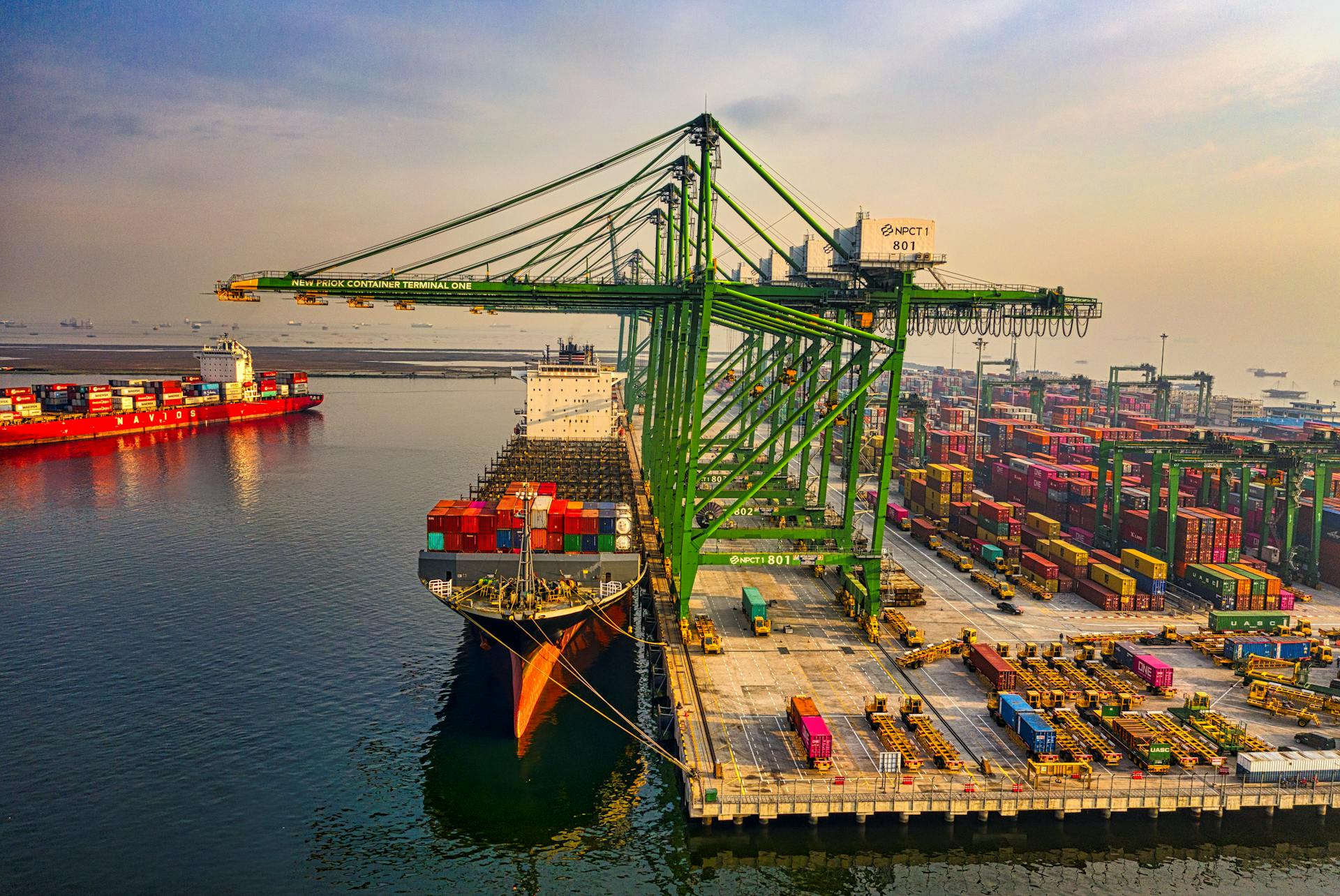
Tulsa Ports are a crucial part of the region's economy, generating significant revenue and creating jobs.
The Tulsa Ports Authority oversees the Tulsa Port of Catoosa, which is a major inland port located on the Verdigris River.
The port handles over 2 million tons of cargo annually, including goods such as coal, oil, and agricultural products.
This cargo is transported to and from the port via the McClellan-Kerr Arkansas River Navigation System.
The port's strategic location allows it to serve as a gateway for international trade, with connections to major markets in the United States and abroad.
Port of Catoosa Overview
The Tulsa Port of Catoosa is a major economic engine for the region, employing over 4,000 people at over 70 companies in its industrial park.
Located near the city of Catoosa in Rogers County, the port encompasses an area of 2,500 acres and ships manufactured goods and agricultural products from Oklahoma to the rest of the world.
The port is designated a foreign trade zone, with over 2.7 million tons of cargo shipped through it in 2013 alone.
The Tulsa Port of Catoosa is the head of navigation of the McClellan-Kerr Arkansas River Navigation System, a 445-mile waterway that links the Verdigris and Arkansas Rivers, the Arkansas Post Canal, the White River, and the Mississippi River.
The waterway provides a nine-foot-deep channel with a total lift of 420 feet through eighteen locks and dams, thirteen in Arkansas and five in Oklahoma.
Each lock chamber is 110 feet wide and 600 feet long.
The Tulsa Port of Catoosa has a $300 million economic impact on the area every year, and is responsible for connecting Tulsa to the rest of the world.
The port handles a wide range of agricultural products, fertilizer, and industrial cargo, including sand, rock, steel, petroleum products, natural gas industry supplies and equipment, and petrochemical plant equipment.
Here are some key statistics about the port:
- 445 miles of water connecting the Tulsa Port of Catoosa to the Mississippi River
- 2,500 acres of land encompassed by the port
- 4,000+ people employed at the port and in its industrial park
- 70+ companies operating at the port
- 1,500 tons of cargo that each barge on the navigation system can hold
- 12 barges that one towboat at the port can push, equivalent to about 720 semi-trucks
History
The Tulsa Port of Catoosa has a rich history dating back to the early 1960s, when a delegation of 23 Tulsa business people traveled to Ohio to evaluate the impact of the Ohio River Valley navigation systems on regional business growth.
This visit convinced them that a port city on the McClellan-Kerr Arkansas River Navigation System would stimulate business in Oklahoma, leading to the creation of the City of Tulsa–Rogers County Port Authority.
The port officially opened for business on February 20, 1970, and received its first commercial shipment in January 1971.
It was formally dedicated by President Richard M. Nixon on June 5, 1971, marking a significant milestone in its development.
The port has undergone significant expansions over the years, including the addition of a 200-ton capacity overhead crane and a roll-on/roll-off dock.
In 2016, the port added a new 720-foot dock accommodating a rail line and multiple cranes, further increasing its cargo-handling capacity.
Today, the Tulsa Port of Catoosa is one of the largest, farthest inland river ports in the United States, serving as a fully equipped multi-modal transportation center.
Consider reading: Port of Texas City
Economic Impact
The Tulsa Port of Catoosa has a $300 million economic impact on the area every year.
Sheila Shook, in charge of education at the Port, says more than 3,700 people are employed at Port of Catoosa and Inola through 70 companies.
Each barge on the navigation system can hold 1,500 tons of cargo, which is the same as 60 semi-trucks, making it a great way to ship certain kinds of products.
Shipping by barge is one-fifth the cost of sending goods by truck, which helps farmers and eventually consumers.
Boosting Regional Business
Tulsa's Port of Catoosa is a key player in regional business, with a vast network of navigable waterways connecting landlocked regions to international shipping lanes.
The Port of Catoosa has a long history of commerce, and port officials are hoping its future follows the same path.
Each barge holds 1,500 tons of cargo, which is equivalent to 720 semi-trucks.
Shipping goods by barge is one-fifth the cost of sending them by truck, making it a cost-effective option for companies.
See what others are reading: Port to Door Shipping
This cost-effective shipping method keeps manufacturing jobs in northeast Oklahoma, benefiting local farmers and consumers.
The Port of Inola is a promising new development, with 2,000 acres of empty land waiting to be filled.
Port officials are talking to companies about advanced manufacturing and energy projects, with a new rail project set to be completed on June 5.
The interest generated by a recent visit from a company executive has sparked interest in Tulsa from other companies globally.
Recommended read: New York Port of Embarkation
Infrastructure Investment Brings Returns
The Tulsa Port of Catoosa has a $300 million economic impact on the area every year.
This is a staggering number that highlights the importance of the port to the local economy. The port's waterway connects Tulsa to the rest of the world, making it a vital link for international trade.
More than 3,700 people are employed at the Port of Catoosa and Inola through 70 companies, demonstrating the port's significant contribution to job creation.
Each barge on the navigation system can hold 1,500 tons of cargo, which is equivalent to 60 semi-trucks, making it a more efficient and environmentally friendly way to ship certain products.
The port's infrastructure is designed to handle massive amounts of goods and raw materials, such as steel, wheat, and soybeans, which are shipped to and from Tulsa and then back to global markets.
This efficient shipping method keeps manufacturing jobs in northeast Oklahoma, benefiting the local economy and consumers.
The port's officials are working to bring more business to the region, with plans to expand to the Port of Inola, where there are 2000 acres of empty land to fill.
The new rail project at the Port of Inola, scheduled to be dedicated on June 5, is a significant step towards achieving this goal.
Frequently Asked Questions
Does Tulsa have a port?
Yes, Tulsa has a port, specifically the Tulsa Port of Catoosa, which has been in operation since 1971.
How many ports are in Oklahoma?
Oklahoma has four inland ports, including the Port of Catoosa, the nation's furthest inland, all-weather, ice-free port. These ports connect the state to seaports worldwide, facilitating global trade and commerce.
Can you visit the Port of Catoosa?
Yes, the Tulsa Port of Catoosa offers free educational tours for large groups and classrooms. Learn more about scheduling a tour for your group.
Sources
- https://en.wikipedia.org/wiki/Tulsa_Ports
- https://www.okhistory.org/publications/enc/entry
- https://www.kjrh.com/news/local-news/tulsa-ports-looking-to-bring-more-business-to-region
- https://www.waterwaysjournal.net/2025/03/28/infrastructure-investment-pays-dividends-for-tulsa-ports/
- https://www.newson6.com/story/6657b7d121cdd54f66f6cf8d/tulsa-port-of-catoosa-brings-big-impact-to-area
Featured Images: pexels.com


